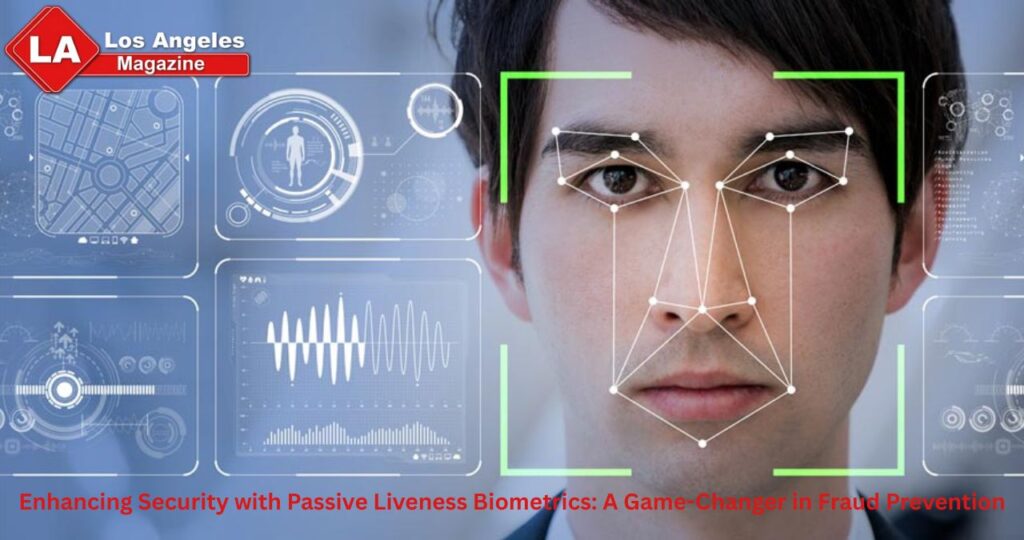The evolution of digital fraud demands additional security measures that transcend traditional authentication methods for protecting user identities. Advanced fraud prevention strategies are necessary due to the rising threats associated with identity theft and unauthorized account access and identity theft incidents. The active technology known as Passive Liveness Biometrics provides enhanced identity verification while maintaining complete user experience integrity.
Understanding Passive Facial Liveness Detection
Modern fraud prevention systems depend heavily on Passive Facial Liveness Detection for their operation. The passive liveness detection system operates undisturbed in the background, as it differs from active checks that force users to blink or nod as verification methods. The technology assesses facial traits automatically to authenticate real individuals through a method that causes no inconvenience for users while maintaining high efficiency.
How Passive Liveness Check Works
Passive Liveness Detection uses advanced algorithms to check a person’s facial features and confirm their identity. The process includes several steps:
- Image Capture – A user submits a selfie or an image from an ID document.
- Facial Analysis – The system examines the facial structure, texture, and reflective properties, differentiating between a live person and fake representations such as photos, videos, or masks.
- Depth & Reflection Assessment – Subtle details like light reflection, skin texture variations, and depth perception help detect spoofing attempts.
- Cross-Verification – The captured live image is compared against the ID document for a precise match, ensuring authenticity.
- Instant Validation – The system delivers immediate verification results, adding an extra layer of security to facial recognition systems without causing user inconvenience.
The effectiveness of this liveness detection lies in its ability to detect fraudulent attempts without requiring the user to take additional steps. Unlike traditional verification methods, which may introduce friction, this approach maintains a seamless and natural authentication process.
Applications of Passive Liveness Detection in Fraud Prevention
Passive Liveness Detection has transformed identity authentication in many industries. It stops spoofing attacks while ensuring a smooth user experience, making it a top choice for fraud prevention. Key sectors benefiting from this technology include:
1. Banking & Financial Services
The increasing popularity of digital banking encourages financial institutions to use passive facial liveness detection to prevent unauthorized transactions while protecting against identity fraud together with money laundering. Financial institutions service the banking industry as a leading target for fraud so this innovative biometric method protects customer assets and builds trust between clients.
2. E-Commerce & Online Retail
The integration of passive liveness checks by e-commerce platforms serves to verify customers before approving their payments and transactions. The implementation creates secure online shopping conditions which reduces both payment chargeback frauds and stolen credentials fraud incidents.
3. Telecommunications
Telecom service providers use passive liveness biometrics as standardized identification during SIM card procedures and customer log-ins to stop fake profiles and protect against identity theft. The implementation of this technology makes it easier to prevent financial exploitation from misuse of SIM switches because it stops fraudulent activities such as SIM swapping.
4. Healthcare & Telemedicine
Medical institutions implement passive facial liveness detection for online consultation patient identification in order to protect confidential patient data. The technology blocks healthcare identity fraud so medical institutions can securely protect their patients’ privacy and safeguard their sensitive healthcare information.
5. Government & Public Services
Governments employ passive liveness detection in national ID verification, passport issuance, and social service applications to enhance security in digital interactions. This ensures that services are provided only to legitimate individuals, reducing the risk of identity fraud in public sector transactions.
The Importance of Passive Liveness in Identity Verification
Passive Liveness Biometrics within authentication systems creates a robust security framework against fraudulent attempts. The security method operates differently than traditional password-based authentication because passive liveness functionality distinguishes genuine users from impostors better than security questions. This technology ensures:
- Improved Security – The technology enhances security measures because it identifies complex fraud methods during detection processes.
- Seamless User Experience – Offers frictionless authentication without requiring user participation.
- Scalability – Can be integrated into various digital platforms, making it an ideal solution for businesses of all sizes.
- Compliance & Trust – Helps organizations meet regulatory requirements while fostering customer confidence in digital services.
The use of biometric authentication has become increasingly necessary in today’s digital landscape. Password-based systems are no longer sufficient in preventing fraud, making biometric verification a reliable alternative. Passive liveness detection enhances these security measures by ensuring that users are physically present during authentication.
Future Trends in Passive Liveness Biometrics
The development of sophisticated techniques by fraudsters drives passive facial liveness detection systems to advance. Future developments in artificial intelligence and machine learning will strengthen passive liveness biometrics which enables systems to spot highly complex spoofing attempts. Combining passive liveness detection with multi-factor authentication will develop stronger security infrastructure that reduces identity fraud exposures to a minimum level.
The expansion of passive liveness detection enables users to obtain full control of their digital identities within decentralized identity systems that operate without centralized control systems. Through this approach, the system adds both stronger protection measures and preserves online privacy components. Different sectors such as financial services, travel and entertainment plan to expand their use of passive liveness biometrics because organizations need modern authentication methods that provide both efficiency and high security standards.
Conclusion
Passive Liveness Biometrics represents a major advance in fraud prevention alongside digital identity verification solutions. The solution provides top security along with smooth user experiences, thus becoming an essential asset for businesses and organizations. The development of technology platforms requires Passive Liveness Detection to create both trustworthy digital security and trusted online environments.



